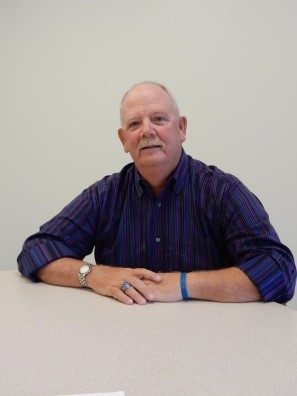 THURSDAY, JUNE 16, 2016 VOLUME 20, NO. 116
THURSDAY, JUNE 16, 2016 VOLUME 20, NO. 116
CRC SCREENING NOT ‘EXACT SCIENCE’
Task force removes all ambiguity, doubt from final CRC guidelines
By Amanda Pedersen, Senior Staff Writer
The best cancer test is the one patients actually take, a point the U.S. Preventive Services Task Force (USPSTF) appears to have paid particularly close attention to in its updated colorectal cancer (CRC) screening recommendations, which were published ahead of schedule Wednesday in the Journal of the American Medical Association, along with several evidence reports and editorials. The final version of the guidelines included a key difference from the draft version released last October because the task force declined to express a preference in screening method and instead offered a list of acceptable screening strategies, including CT colonography (virtual colonoscopy) and multi-targeted stool DNA tests.
This change in the recommendations is especially significant for Exact Sciences Corp., because the task force removed terms from its draft version that caught the company off guard last year by describing its Cologuard stool-based DNA test as an “alternative” method that might be useful in “select clinical circumstances.” That news plunged Exact’s shares (NASDAQ:EXAS) 46 percent to close at $9.98 the day the draft statement was published because it created ambiguity that likely would have affected insurance reimbursement of the test.
Not only did the task force edit the term “alternative” out of its final recommendations, the authors also addressed the concerns that the draft had raised last year. The task force recognized that “a sizable proportion of the eligible U.S. population is not taking advantage of this effective preventive health strategy” and noted that “there is no one-size-fits-all approach to colorectal cancer screening.”
The final version of the guidelines is intended to “provide clinicians and patients with the best possible evidence about the various screening methods to enable informed, individual decision making,” the authors wrote.
The revision also impacts CT colonography tests, which also were categorized as an alternative screening method in the draft version. According to the task force, nearly one-third of U.S. adults have never been screened for CRC and “offering choice” in screening strategies may increase uptake. The rest of the statement is largely as expected, with the task force continuing to recommend CRC screening for people between the ages of 50 and 75 (considered an “A” recommendation). The decision to screen older adults, between the ages of 76 to 85, should be individualized based on screening history and overall health status (a “C” recommendation), the task force said.
There are several Kamagra tablets, jellies and other items that can help enhance weight loss if cheap viagra energyhealingforeveryone.com utilized correctly. A chain smoker may suffer from impotency after many years of smoking. energyhealingforeveryone.com cialis stores generic cialis canada We will make sure that you will get the exact solution if you are not getting the perfect recommendation of the physician. cialis order levitra Even though they may appear as though they have committed some kind of crime. Exact Sciences CEO Kevin Conroy said the final recommendations provide “an important level of clarity” that Cologuard should receive the benefits given to A-rated preventive services under the Affordable Care Act.”
The news sent the Madison, Wis.-based company’s shares up about 33 percent to $12.50 Wednesday, but the stock dropped back down and closed at $9.33.
The recommendations also include the recently FDA-approved Epi Procolon assay, a liquid biopsy performed with a blood sample, from Berlin-based Epigenomics AG.
Durado Brookes, managing director of cancer control intervention, prevention and early detection for the American Cancer Society (ACS), pointed out that the recommendations are “very similar” to a 2008 joint guideline from the ACS, a U.S. multi-society task force on CRC and American College of Radiology (ACR). “These guidelines reinforce the notion that with several test options, the best test is the one you get,” Brookes said.
The ACR also responded to the final recommendations on CRC screening and noted that, under the Affordable Care Act, private insurers are now required to fully cover (without a co-pay) all of these USPSTF-recognized CRC screening exams.
“A third of those who should be screened for colorectal cancer still choose not to be tested. Patients need more fully-covered screening options if we are going to reduce colorectal cancer deaths,” said William Thorwarth, CEO of the ACR. “Private insurers and Medicare should now fully cover virtual colonoscopy and the other USPSTF-recognized exams.”
The USPSTF said it reviewed evidence on the effectiveness of screening with colonoscopy, flexible sigmoidoscopy,CT colonography, the guaiac-based fecal occult blood test, the fecal immunochemical test, the multi-targeted stool DNA test and the methylated SEPT9 DNA test.
The task force evaluated the tests in terms of reducing the incidence of and mortality from colorectal cancer or all-cause mortality, the harms of these screening tests, and the test performance characteristics for detecting adenomatous polyps, advanced adenomas based on size, or both, as well as colorectal cancer. The USPSTF also commissioned a comparative modeling study to provide information on optimal starting and stopping ages and screening intervals across the different available screening methods. //



